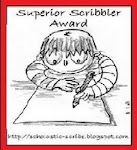
When I was seven, I wrote Disney a letter requesting that they rerelease Mary Poppins. In the days before VCRs, DVDs, downloads, or even HBO (we didn’t own a television at the time), the only way to see a movie was in the theaters. To their credit, Disney wrote me back with a schedule. I only had a few months to wait. A fool for musicals and Julie Andrews, I adored the Hollywood version of Mary Poppins for its spoonfuls of sugar, but it had no familial relationship to P.L. Travers’s books, which I also loved. Sure, Disney featured a nanny named “Mary Poppins” who arrives at the Banks’s house to tend to Jane and Michael, but that’s where the resemblance ends.
In the books, Mary Poppins is not simply stern, she’s cross. She’s a plain-looking woman who never fails to admire her reflection in a shop window. No one ever knows what Mary Poppins thinks, but Jane and Michael (and the younger twins, John and Barbara) love her fiercely. She chides and scowls (like a genuine caregiver), but she’s also full of surprises. She can talk to animals, travel through time, and she knows elemental secrets of the world. The narratives sometimes feel sinister—as when spirit creatures whisk Jane and Michael to the zoo to witness a topsy-turvy night when humans get locked in cages. Mary Poppins opens the door to strange mysteries well beyond the nursery, but they're mysteries only children can perceive.
A favorite chapter describes a trip to an old and dusty bake shop to purchase heavy slabs of dark gingerbread studded with gilt stars. The proprietor, Mrs. Corry, an ancient woman who knew Alfred the Great, breaks off her fingers and feeds them to the twins—“Only Barley Sugar,” she says, laughing. Anticipating the creepy deliciousness of Willy Wonka, Mrs. Corry’s fingers change flavor everyday—sometimes they’re peppermint bars or hoarhound candy. She nibbles on them herself at night. “Good for the digestion,” she cackles. After they eat their gingerbread, Jane and Michael take the golden stars and hide them in their room. That night, Mrs. Corry, her two fat and sullen daughters, Fannie and Annie, and Mary Poppins pilfer their stars and paste them in the sky. With a brush, a pail of glue, and a ladder. It makes sense that Sylvia Plath considered Mary Poppins the fairy godmother of her childhood.
Mrs. Corry’s bony fingers picking out pieces of gingerbread for the children generates visceral Hansel and Gretel images. I held off reading Hansel and Gretel to DD for a little while; it’s not the witch that terrifies so much as the parents, who abandon their children in the woods because they can’t afford to feed them. But I believe children have fears whether we censor their stories or not. Stories with a touch of darkness, a hint of gloom, or a threat of sadness help children identify and name what’s bittersweet. Mary Poppins also conjures the dread of abandonment. The first book ends with Mary Poppins leaving, as she promised, when the wind changes. Jane and Michael sit forlornly at the window, weeping and calling her name, as she floats above the trees.
Like Mary Poppins, this gingerbread recipe feels elemental—dark, rich—primitive even. Each bite brings up ancestral memories of shadowy woods and medieval spices. Leave a trail of crumbs to find your way back home.
Gingerbread Cookies adapted from Gourmet Magazine
Makes 4 dozen cookies
2/3 cup molasses
2/3 cup packed dark brown sugar
1 tablespoon ground ginger
1 1/2 teaspoons ground cinnamon
1/2 teaspoon ground allspice
1/2 teaspoon ground cloves
2 teaspoons baking soda
2 sticks of unsalted butter
1 large egg, slightly beaten
4 cups all-purpose flour
1/2 teaspoon salt
Bring molasses, brown sugar, and spices to boil in 5 quart heavy saucepan over moderate heat, stirring occasionally, and remove from heat. Stir in baking soda (mixture will foam up), then stir in butter, 3 tablespoons at a time, letting each addition melt before adding the next until all the butter is melted. Add egg and stir until combined, then stir in 3 1/2 cups flour and salt. Preheat oven to 325 degrees. Transfer dough to lightly floured surface and knead, dusting with as much of the remaining 1/4 cup of flour as needed to prevent sticking, for about a minute. Halve dough and keep at room temperature. Roll out one half of dough at a time into 14-inch round. Cut out cookies, transfer to buttered baking sheets with spatula, about 1 inch apart. Bake two sheets at a time in lower and upper halves of over, switching positions of the sheets halfway through cooking. Bake until edges are slightly darker about 10-12 minutes total.






3 comments:
I need to read Mary Poppins. I just recorded the movie for my kids and I to watch together.
The ginger cookies look amazing. They are one of my very favorite cookies.
I love your writing! I am not a fan of gingerbread, but I want to make some just because.
;) amy
Pam: My daughter loves the books -- yours might, too!
Amy: Thank you so much! I'm the same way with frosted sugar cookies. They're not my favorite, but I always make them for the fun of it.
Happy Holidays!
Post a Comment